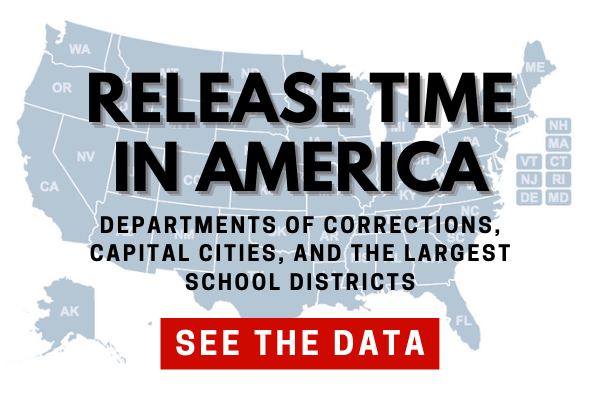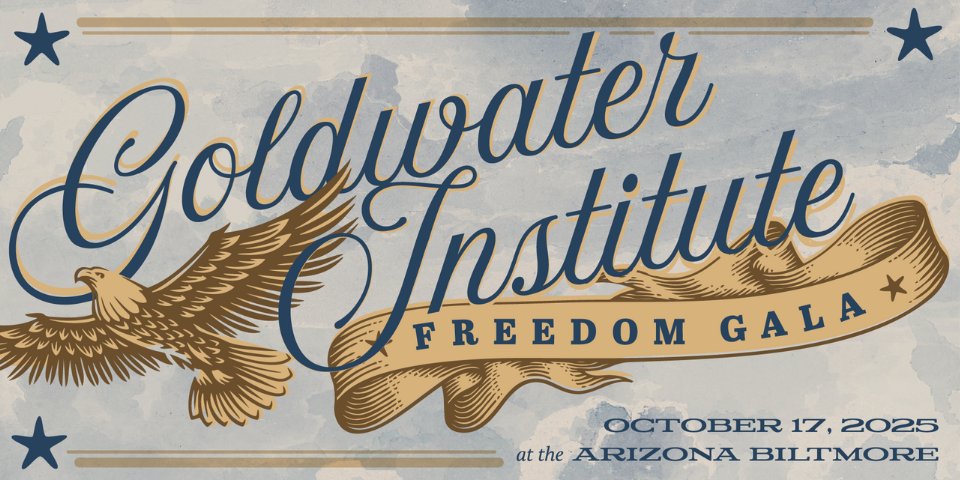Brent McKim works long hours for his teachers union in Louisville, Kentucky. It’s been his full-time job for almost 20 years.
In the old days, before McKim became president of the Jefferson County Teachers Association (JCTA) in 2001, he’d been a high school physics teacher. Now his days are filled with nothing but union duties, representing teachers in grievances, attending union meetings, and lobbying the Kentucky Legislature on union priorities.
None of this sounds unusual for a union president, until you realize that the taxpayers in the Jefferson County School District are paying for it.
McKim is on union release time, a practice that allows government employees to be exempted from their official duties to perform union work while still drawing full pay and benefits from their employers. He works full time for the teachers union. Yet he is carried on the school district’s payroll under the job title “JCTA president,” and has been since he was elected to that post by the union in 2001. McKim would not agree to an interview. The district annually pays him $80,500 plus benefits to work exclusively for the union.
It’s not an uncommon arrangement.
States, cities, counties, and school districts across the country routinely allow government-paid union release time as part of their collective bargaining agreements with public employee unions.
To get a sense of how extensive paid union release time is, or at least to identify the various practices used at the state and local level, the Goldwater Institute analyzed the practices of 150 jurisdictions, three from each state, and was able to document more than 400,000 hours of paid release time annually.
>>> READ HOW WE GOT ANSWERS ON RELEASE TIME IN EACH STATE <<<
The survey was sent to the state departments of corrections, the capital cities, and the largest school districts in every state. Among the items sought was an accounting of the hours and cost of government-paid union release time, and information about any individual who had taken more than 500 hours in the prior full fiscal year.
The biggest takeaway from the responses is how few governments bother to track union release time.
Of the 150 agencies surveyed, only 82 were able to produce data on the number of hours they allowed in release time, including 44 jurisdictions that reported zero hours. Even fewer provided cost figures. The rest generally admitted they do not track the hours and cost of release time, or said it would take extensive research to determine if the data exists.
The 38 jurisdictions that do allow release time and did provide data reported 258,737 paid hours, which cost taxpayers $10.03 million in the last fiscal year, dates of which can vary.
By analyzing the contracts of those jurisdictions that were surveyed but do not track their release hours, the Goldwater Institute identified another 149,636 defined hours of release time. This does not capture all allowed hours, in part because of standard provisions in most of the contracts allowing unlimited or unspecified release time for such things as representing members in grievance and personnel hearings, attending union conferences and conventions, and negotiating new agreements.
Some of the agreements do not specify a certain number of hours, but rather use ambiguous language such as allowing top union officials “reasonable” time to conduct union business. Sometimes release time is not covered in union contracts but in side letters that may or may not be disclosed to the public.
The city of Phoenix is by far the most generous with release time among those jurisdictions surveyed that were able to fully document the hours and cost. Arizona’s capital city allowed 67,511 hours of paid union release time at a cost of about $3.7 million last fiscal year.
Among the agencies that could not or would not provide data on hours and cost, the Miami-Dade County Public Schools in Florida is the biggest supplier of paid union release time, based on the language in union contracts.
The district allows about 22,500 defined hours annually. A single provision in the contract with the United Teachers of Dade allows 2,500 days of paid release time. That amounts to about 20,000 hours, based on an eight-hour day.
No level of government—state, city, or school district—reported any paid release time in Alabama, Mississippi, North Carolina, North Dakota, South Carolina, or West Virginia.
Dues and Dollars
Taxpayer advocates say release time is nothing more than a gift of taxpayer dollars to public employee unions, doled out by politicians and management negotiators afraid to cross the politically powerful organizations. Union officials should be paid with union dues, not with taxpayer dollars, they contend.
“Public dollars should be spent for public purposes, not activities that benefit private, special interests,” said Jonathan Riches, national litigation director for the Goldwater Institute. “And taxpayers should not be forced to finance private labor organizations, particularly when those organizations engage in political activities, lobbying, and union recruitment.”
Backers of release time say it is a benefit to taxpayers because it helps bring “labor peace” by providing a conduit for labor and management to resolve disputes. Release time is used to settle grievances about working conditions and disciplinary actions internally, thereby averting costly lawsuits and potential strikes, supporters argue.
Besides, the cost of release time is part of the overall employee compensation package negotiated with government employers, comparable to vacation and sick leave.
Regardless of the reasons for government-paid union release time, any attempt to determine the total hours and cost of it at the state and local level is really just guesswork. For one thing, there are too many jurisdictions.
Aside from the federal and state governments, there are more than 36,000 cities, towns, counties, and school districts nationwide. Each one has its own unique policies regarding unions, collective bargaining agreements, and release time.
Beyond that, the biggest problem is that so many jurisdictions, both large and small, make no attempt to track the hours and cost of release time, even though standard language in bargaining agreements purports to limit the number of hours that can be used, or requires some type of accounting.
There’s a reason for that, said Thom Reilly, a professor at Arizona State University and former director of the Morrison Institute for Public Policy: They don’t want to.
“I think many governments intentionally don’t want to track it because then it would be highlighting a cost that they perhaps don’t want to discuss in public,” said Reilly, who studied union release time practices in the nation’s 77 largest cities and also found a disturbing lack of transparency.
Public employee unions are politically powerful, particularly at the local level, where they can influence races for city council and school boards with endorsements, donations, and political organizing. So it serves the interests of both the politicians and the unions not to make an issue of paid union release time.
“I think there’s a lot of pressure not to put this out there,” Reilly said. “It highlights those types of practices that, if public, would generate a lot of questions.”
The 2017 study co-authored by Reilly found 72% of the big-city unions that were reviewed had some sort of paid release time, with the government paying the full cost for about 59% of them.
Creative Options
There are any number of ways release time is allowed, each with its own variations. Not all jurisdictions that do allow release time allow all of the various forms, but some do.
The simplest is full-time release, where top union officials are paid by their government employers to do nothing but union business for the entire year.
The other major mechanism for release time is a bank of hours. Each union is granted a fixed number of paid hours by the government employer every year to be doled out however and to whomever union officials deem necessary.
Beyond that, standard language in most union agreements—even those without large release time provisions—allows unlimited amounts of time for union stewards and other officials to receive paid release time to represent employees in grievance and disciplinary hearings, or to attend union meetings and conferences.
That can add up.
Of the more than 31,450 hours of release time disclosed by the Connecticut Department of Corrections, only about 7,000 hours were from provisions with defined hours in the contracts. The remainder, 24,441 hours, was used by union stewards for grievance representation and other duties that have no defined limits. Those unrestricted hours cost Connecticut taxpayers more than $825,000.
Had the state not disclosed those hours, there would be no way for the public to know about them just from analyzing its union contracts.
All of the Above
The union agreements with the city of Phoenix illustrate how it all works.
Phoenix has agreements with seven different unions representing various classes of workers such as police officers, firefighters, supervisors, laborers and equipment operators, and office and clerical staff.
Each of those contracts allows for city-paid full-time release positions for two to six people.
In addition, all but one of the unions are granted banks of paid release hours by the city ranging from 325 hours to 4,540 hours, totaling more than 15,600 hours, not including the full-time release positions.
The Phoenix Law Enforcement Association (PLEA), which represents nonsupervisory police officers, has six designated full-time release positions in addition to the 1,859 hours the city contributes to its release bank. PLEA is granted an additional 500 hours per year for a lobbyist.
Local 2960 of the American Federation of State, County and Municipal Employees (AFSCME), which represents office and clerical workers, was granted four full-time release positions and a bank of 4,540 city-paid release hours.
Among the seven unions, Phoenix had 17 employees on full-time release, and another 11 who spent between 600 and 1,456 hours doing union business on the taxpayers’ dime. That does not count those who used less than 500 hours in the most recent fiscal year.
Phoenix officials refused to discuss their release time practices, such as why so many full-time positions and large banks of hours are needed.
The Goldwater Institute identified at least 16 jurisdictions that have one or more union officers on full-time release paid for by the government. Many, like Phoenix, have multiple full-time release positions defined in their contracts. Others are granted large banks of hours that can be used to carve out full-time positions.
How Much, Who Knows?
The Goldwater Institute’s analysis exposes the practices and, to some degree, the extent and cost of government-paid union release time at the state and local level. However, it does not make it possible to get an accurate fix on how many hours and how many millions of dollars the release time costs taxpayers annually. By its nature, the survey excludes many of the nation’s largest cities, which tend to be the most generous providers of release time.
Phoenix is the largest capital city in the United States, but only the fifth-most populous city in the country. The capital city is also the largest city in 17 states.
At the other end of the spectrum, Washington’s capital of Olympia is the state’s 24th-largest city, and Missouri’s capital, Jefferson City, ranks as the state’s 15th-largest.
To get a sense of what other large jurisdictions allow, the four U.S. cities larger than Phoenix were also surveyed about their release time practices. Los Angeles officials reported allowing 21,818 hours of paid union release time at a cost of about $1.14 million, about a third of what Phoenix allows. Houston reported it had no city-paid union release time.
New York and Chicago did not provide data.
Keeping It Quiet
Reilly, the ASU professor and co-author of the study on big-city release time, said there are practical reasons there is little stomach for tracking the practice, much less reforming it.
When new contracts are negotiated, the focus tends to be on big-ticket issues such as pay packages and pension contributions, said Reilly, who did not take a position on whether release time is good or bad, only that there should be more transparency and public accountability. Opening up debate on side issues, such as renegotiating release time that may have gone unnoticed in the contracts for decades, would only complicate the process.
Since members of the public are rarely aware of the practice, there is no incentive for elected officials to risk the political wrath of the public employee unions by making release time an issue, he said.
“There’s a lot of additional benefits that unions provide elected officials,” Reilly said. “So I think there’s a lot of pressure among elected officials not to push this issue.”
Beyond their failure to track hours and costs of release time, state and local governments rarely require union officials to document how they spend their days, and sometimes don’t even ask for proof they’ve shown up for work.
Recent court cases and media reports show union officials on both full- and part-time release routinely engage in partisan electioneering through union endorsements, fundraising, and get-out-the-vote efforts. They lobby legislatures on issues that often put them at odds with the governments paying their salaries. In some cases, they have used release time to participate in such activities as golf tournaments, boxing matches, and fishing derbies, or even to augment their personal vacation time.
So the bottom line is that every year, cash-strapped state and local governments are spending millions of dollars in taxpayer money to provide thousands of hours to private labor unions to use however they see fit, said Jonathan Riches, the national litigation director at the Goldwater Institute.
That, he said, is a bad investment.
“We know release time is used for activities that have no clear public purpose,” Riches said, citing the political activism and lobbying for union interests in front of state legislatures, city councils, and school boards.
“We also know that release time is used for activities that are often adverse to government employers. This includes representing employees who are accused of misconduct, in some cases serious misconduct, in disciplinary proceedings. That means that taxpayers are often forced to pay to keep bad actors in government jobs. But in many cases, we simply don’t know how release time is used at all because the government entities that provide it do not place any limits, controls, or accountability procedures to measure its use. In this way, release time employees can use release time—and often do—whenever, wherever, and however they see fit with no direction or oversight from their public employers. As a result, there are few arrangements where taxpayer resources, or the resources of nonunion employees, are so clearly outside the control of the public, or so clearly earmarked for purely private activities.”










